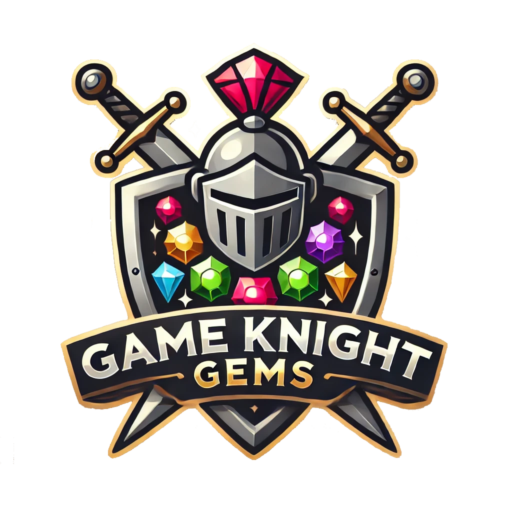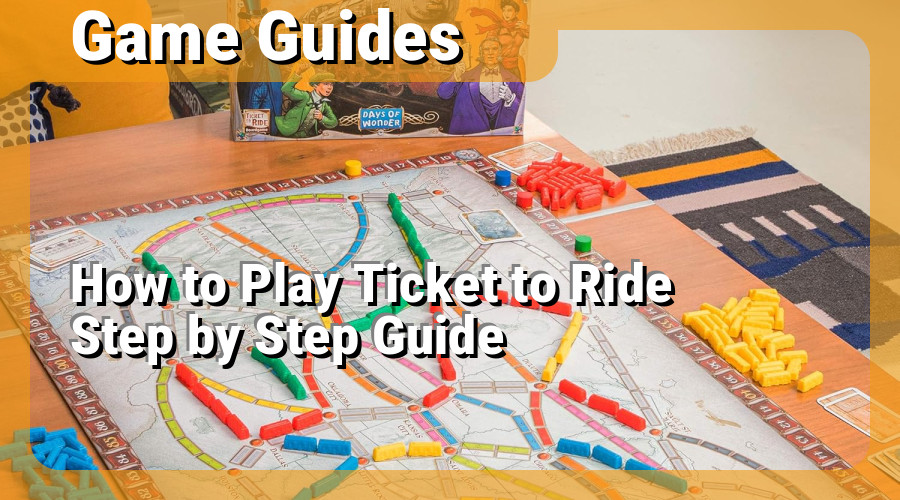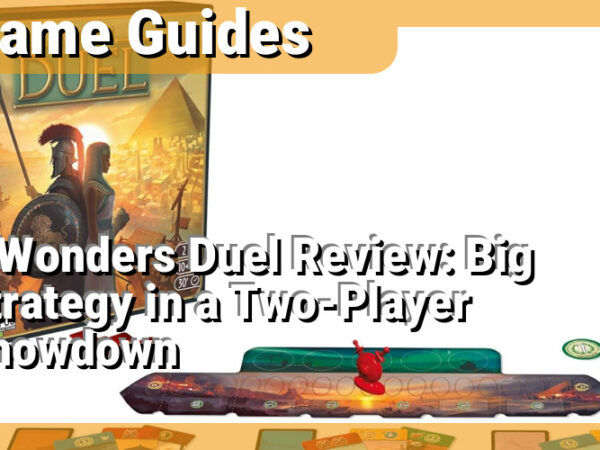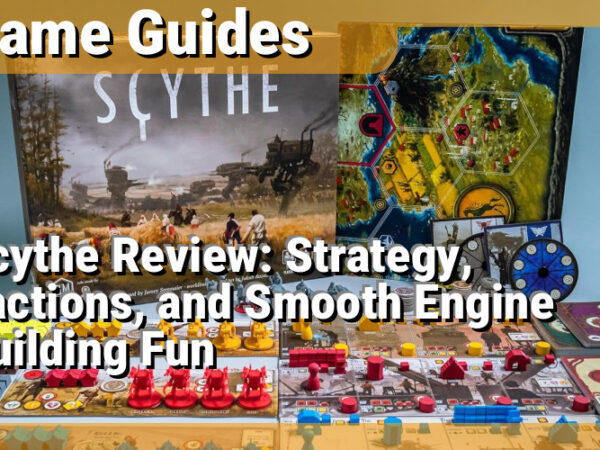Posts may contain affiliate links. Learn more in our Affiliate Link Policy.
Where to Buy Ticket to Ride
How to Play Ticket to Ride: A Simple Step-by-Step Guide
What Is Ticket to Ride?
Ticket to Ride is a board game about collecting train cards and building railway routes between cities across North America. It’s easy to learn, plays smoothly, and works well for 2 to 5 players. The goal is to score the most points by claiming routes and completing destination tickets. If you’re new to board games or just looking to add a smooth ride to your game night, this one’s a solid pick.
What’s in the Box
Before we jump into how to play, here’s what you’ll find inside the standard edition of Ticket to Ride (USA map):
- 1 Board showing a map of the USA with train routes connecting cities
- 240 Colored Train Cars in 5 colors (48 per player)
- 110 Train Cards with different colored train cars, plus locomotives (wild cards)
- 30 Destination Tickets showing routes between 2 cities and the points they’re worth
- 5 Wooden Scoring Markers
- 1 Rulebook
Optional Setup Tip
Use small trays or bowls to sort trains and cards by color before starting. It’ll make things run smoother mid-game.
Setting Up the Game
Each player picks a color and takes:
- 1 matching scoring marker, placed on the “Start” space at the edge of the board
- 45 train cars in their color
Shuffle the 110 Train Cards and deal 4 cards to each player.
Place the rest of the Train Cards as a draw pile. Flip 5 cards face-up beside it to create the display row.
Shuffle the Destination Tickets and deal 3 tickets to each player. You must keep at least 2 but can choose to keep all 3 if you want more challenge and possibly more points. Set any returned tickets on the bottom of the deck without showing them.
Goal of the Game
Score the most points by:
- Completing routes between cities using colored train cards
- Finishing Destination Tickets by connecting the two cities shown
- Building the longest continuous route at the end of the game
How to Play
On your turn, choose 1 of these 3 actions:
1. Draw Train Cards
- Pick 2 cards, either from the face-up display or the top of the draw pile
- If you take a locomotive (rainbow wild card) from the face-up cards, you can only draw 1 card total that turn
- Face-up cards are replaced immediately after being picked
- If 3 of the 5 face-up cards are locomotives, discard all 5 and refresh with 5 new cards
2. Claim a Route
- Spend cards that match the color and length of a route between two cities
- Put your train cars on the spaces between the cities on that route
- You must have enough matching cards to build the full route in one turn
Route scoring:
| Route Length | Points Earned |
|---|---|
| 1 | 1 |
| 2 | 2 |
| 3 | 4 |
| 4 | 7 |
| 5 | 10 |
| 6 | 15 |
Gray routes can be claimed using any one color of matching cards. You just have to play the same color across the whole route.
Double routes: Some cities have two tracks side-by-side. In a 2-3 player game, only one of those can be used. In a 4-5 player game, both are open.
3. Draw Destination Tickets
- Draw 3 new Destination Tickets from the deck
- You must keep at least 1
- Place any unused ones on the bottom of the deck
These give you bonus points if you connect two specific cities. If you don’t complete a ticket by game end, you lose those points instead.
Game End
The game enters the final round when any player has two or fewer train cars left after their turn. Everyone, including that player, takes one last turn.
Scoring at the end includes:
- Points from routes claimed during the game
- Points from completed Destination Tickets
- Minus points for any uncompleted Destination Tickets
- 10 bonus points for the player with the longest continuous path of connected trains
Whichever player has the most points wins.
Tips for a Smooth Ride
- Claim short routes early. They can disappear fast, especially around key cities like Chicago or Denver.
- Use wild cards wisely. Locomotives are great for long routes or when you’re missing one key color.
- Watch your opponents. If you see someone building toward a city you need, consider rerouting or claiming a path quickly.
- Don’t hoard tickets unless you’re ready. Drawing new tickets late in the game can blow up in your face if there’s no time to finish them.
What Makes Ticket to Ride a Favorite
Ticket to Ride gets people hooked for a few reasons. It offers just enough strategy to keep experienced players engaged, but it’s simple enough that new players can pick it up in one round. It doesn’t drag, has a strong table presence with its colorful trains, and has just enough competition. The tension around blocking routes or racing for a key path adds a nice bit of drama without turning into a fight night.
If You Like Ticket to Ride, Try These Too
- Ticket to Ride: Europe – Adds tunnels, ferries, and train stations for a twist on the standard rules
- TransAmerica – Quicker and lighter but with similar route-building vibes
- Whistle Stop – More depth, with pick-up-and-deliver mechanics and an expanding board
- Railroad Ink – Combines dice and drawing to build routes in a compact format
Why You Should Get It to the Table
Ticket to Ride is a go-to pick for game nights, family gatherings, or introducing new people to the hobby. It plays in about an hour, teaches easily, and keeps players leaning forward turn after turn. If you’re looking for a bright, friendly game with just the right touch of competition, you can’t go wrong throwing this one on the table.





